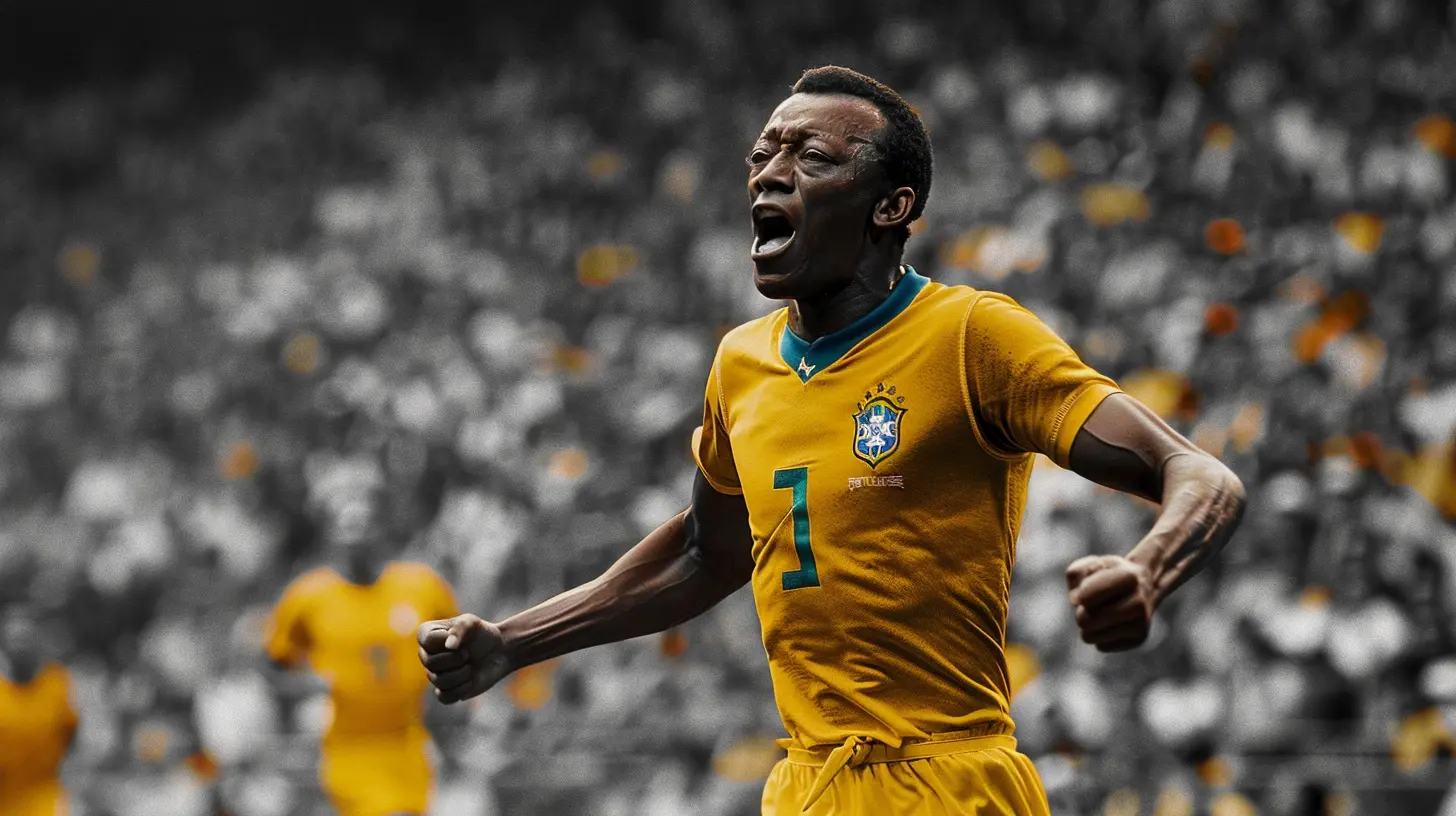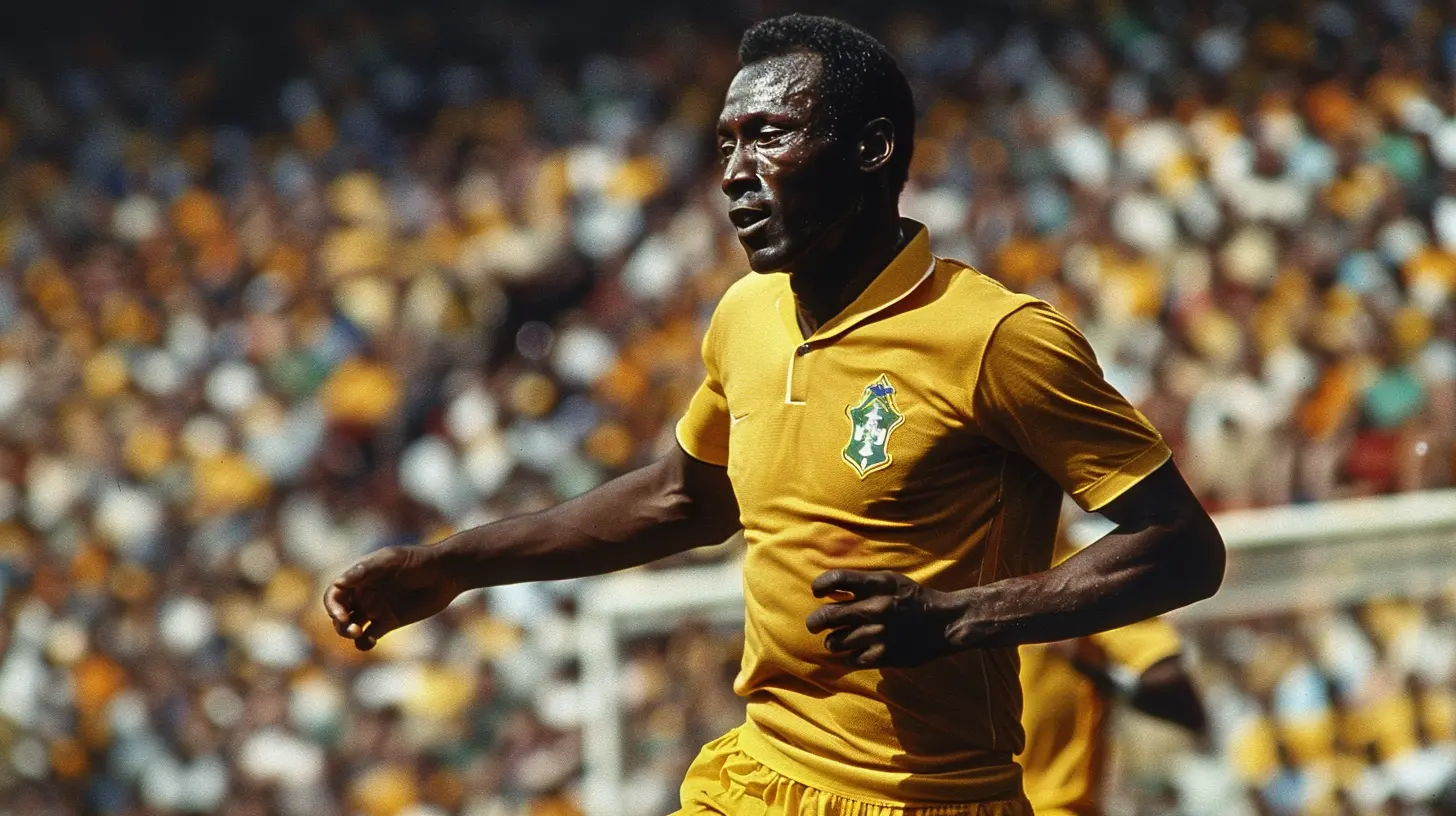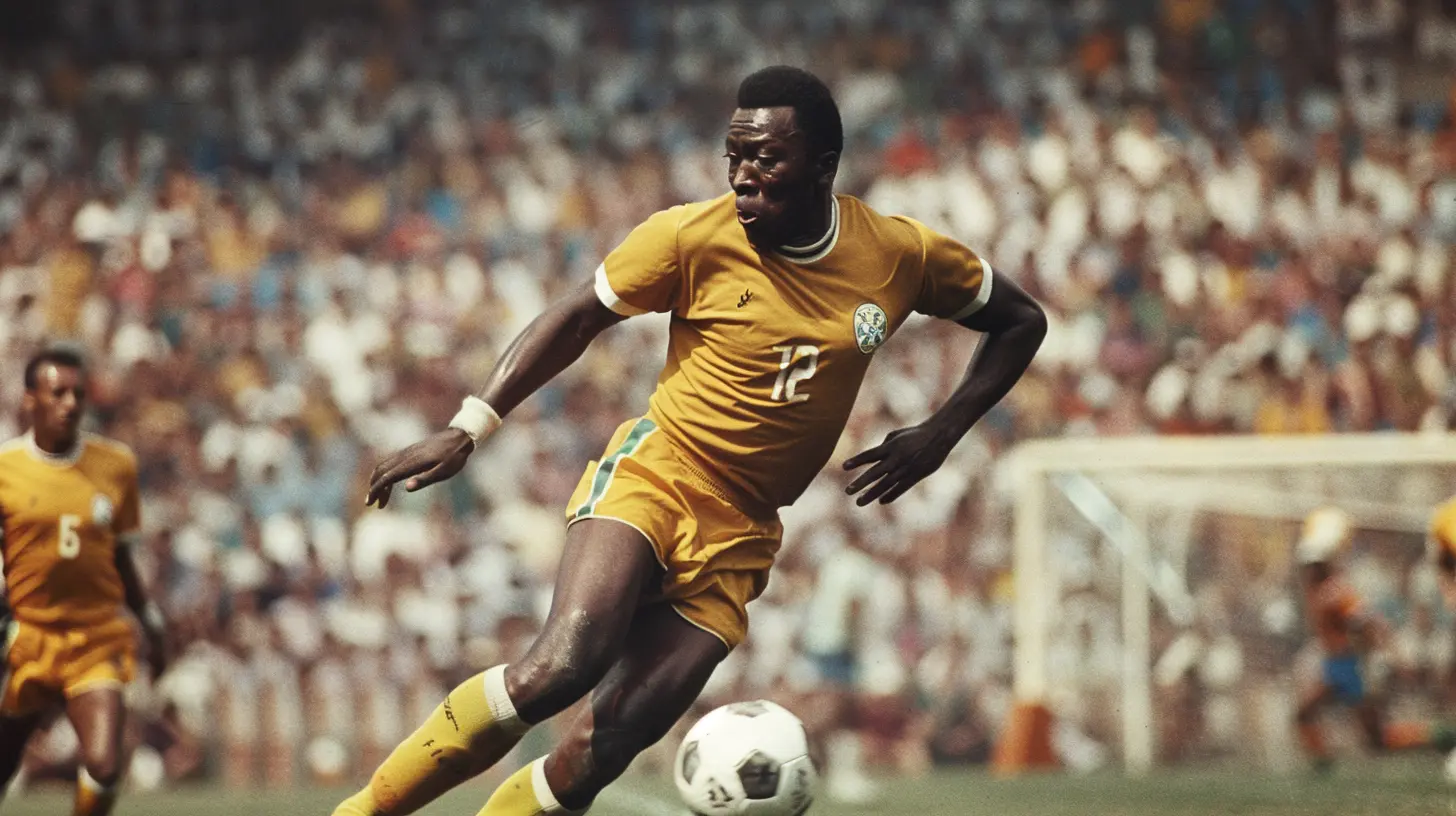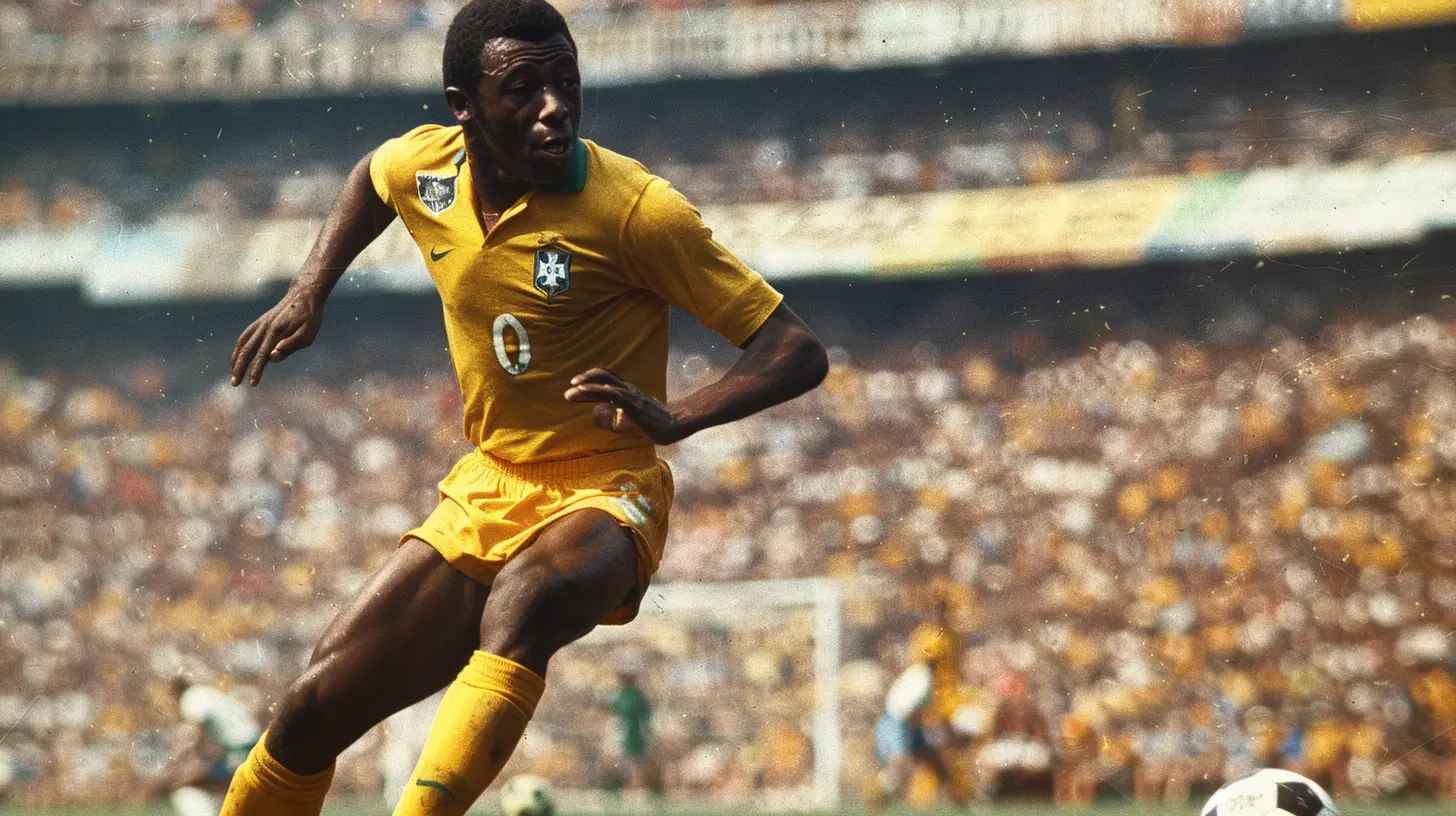The Legacy of Pele: The King of Soccer
22 October 2025
There are names in sports that echo through history, but few resonate as powerfully as "Pele." If you've ever kicked a soccer ball or even just watched a match, chances are you've heard his name. Edson Arantes do Nascimento, aka Pele, wasn't just a player—he was a movement, a legend, a global icon. His influence transcends generations, and even in the modern era of soccer giants, nobody wears the crown quite like him.
In this article, we’re diving deep into the legacy of Pele—the man who turned soccer into art and left footprints on and off the pitch that will never fade. So, grab your jersey and let’s get into it.
Who Was Pele?
Born on October 23, 1940, in Três Corações, Brazil, Pele wasn’t born into fame. In fact, he came from humble beginnings. His father, Dondinho, was a footballer too but didn’t reach the heights his son would someday conquer.Pele’s magic with the ball began early. Legend has it he couldn’t afford a proper soccer ball, so he played with a sock stuffed with newspapers. Doesn’t that alone say something about passion?
By the time he was 15, he had joined Santos FC. And by 16? He was already playing for the Brazilian national team. Talk about starting early!
The Numbers That Speak For Themselves
We all love a good stat, right? Well, here are some that made Pele not just great, but legendary:- Goals Scored: Over 1,000 goals in official games (1,281 goals in 1,363 games including friendlies—still debated, but crazily impressive either way).
- World Cups: The only player to win three FIFA World Cups—1958, 1962, and 1970.
- Age Milestones: Scored a World Cup hat trick at just 17 years old.
These aren’t just numbers; they’re records that shaped the story of the sport. Even some of today’s greatest players can only dream of touching these milestones.
Pele and the World Cup: A Love Story
When people think about Pele, they often imagine him in that iconic yellow jersey with green trim—Brazil’s national team. And for good reason: Pele’s World Cup journey is the kind of story Hollywood would write.- 1958 World Cup: At just 17, Pele made his debut. He scored six goals in the tournament, including a hat trick in the semi-final and two goals in the final. Brazil lifted the trophy, and a star was born.
- 1962 World Cup: Injuries limited his participation, but Brazil still went on to win.
- 1970 World Cup: This was the crown jewel. Brazil’s 1970 team is still considered one of the greatest of all time, and Pele? He was the heartbeat. He scored four goals and produced moments that are replayed decades later.
Fun fact: That black-and-white clip of Pele jumping into his teammates' arms after the final whistle in 1970? That’s soccer history.
The Ambassador of the Beautiful Game
Pele wasn’t just a footballer. He was a global icon, a sports ambassador before the term even existed. After retiring, he didn't fade into the background. Instead, he continued to promote soccer around the world.He used his fame to deliver powerful messages about unity, peace, and love through sport. In fact, during a 1969 match in Nigeria, a ceasefire was declared in a civil war just so people could watch Pele play. Think about that for a second—he literally stopped a war with a soccer ball.
Pele’s Style of Play: Pure Magic
You know those players who seem to have eyes at the back of their heads? The ones who glide past defenders like they’re ghosts? That was Pele.He wasn’t just about scoring goals (though he did a ton of that). His movement, vision, and ability to read the game were years ahead of his time. Think Messi’s intelligence mixed with Ronaldo’s athleticism and a splash of Ronaldinho’s flair. That was Pele—in a nutshell.
He could shoot with both feet, dominate the air, and had phenomenal dribbling skills. And let’s not forget that sick backheel pass he made famous. The guy had it all.
Club Level Greatness: Santos and Beyond
While many modern stars switch clubs seeking bigger paychecks and brighter lights, Pele stayed loyal. He spent the majority of his career at Santos FC. With them, he:- Won 10 Campeonato Paulista titles
- Took home 2 Copa Libertadores trophies
- Conquered clubs globally in friendly tournaments that attracted thousands of fans
Later, he joined the New York Cosmos in the North American Soccer League (NASL). It wasn’t about money—it was about spreading the gospel of soccer to a sports-loving, but soccer-ignorant, nation. And it worked. Soccer in the US owes a lot of its growth to Pele's time in New York.
Off the Field: The Man Behind the Legend
What separated Pele from other greats wasn't just what he did on the pitch. It was who he was off of it.He became a global goodwill ambassador for UNICEF and used his legendary status to support countless social causes. He was knighted by Queen Elizabeth II, named FIFA’s Player of the Century (alongside Maradona), and he stayed humble through it all.
Despite all the fame, Pele retained a grounded personality. You could tell he loved the game for the joy it brought, not just the rewards it provided.
Legacy That Lives On
Even if you’ve never seen him play live, you’ve felt his influence.Think about the flair of Neymar, the poise of Mbappé, or the vision of Messi. They all owe something to Pele. He set the blueprint. He was the prototype.
Pele showed the world that soccer could be more than just a game. It could unite countries, inspire change, and offer hope to kids playing barefoot in dirt streets.
Pele's Impact on Modern Soccer
Let’s face it—every time there's a debate about the "GOAT" (Greatest of All Time), Pele’s name is always in the convo. His stats, his trophies, and his global influence make that spot well-earned.But it's not just about past glory. FIFA still uses Pele-themed materials in promotions. Documentaries, interviews, and tributes keep pouring in. Soccer boots, kits, and even video game characters are modeled after his style.
He made soccer cool before it was mainstream worldwide.
The Final Whistle: Saying Goodbye
Pele passed away on December 29, 2022, at the age of 82, after a long battle with cancer. The soccer world mourned like it had lost a family member. Football fans, players, and clubs around the globe paid tribute—because they knew it wasn’t just a player that was gone. It was a symbol. A piece of soccer's soul.But legends don’t really die, do they? When a kid in a remote village scores a goal and celebrates like Pele did, his spirit lives on.
The King Still Reigns
So, what makes Pele more than just another name in the record books? It's simple—legacy. He didn’t just play the beautiful game. He embodied it. He was the kid with the sock ball, the teenager who conquered the world, and the man who changed the game forever.In the noisy arena of sports, where fame often fades fast, Pele’s crown still shines brightest. No matter how many new stars rise, there’ll always be one King of Soccer—and that’s Pele.
all images in this post were generated using AI tools
Category:
Sports HistoryAuthor:

Nelson Bryant
Discussion
rate this article
1 comments
Izaak McVicar
Pele's incredible talent and unwavering passion for soccer have inspired generations. His legacy reminds us that greatness isn’t just about triumphs, but about how we touch lives through our passion and dedication.
October 30, 2025 at 8:36 PM

Nelson Bryant
Thank you for your thoughtful comment! Pele's impact transcends the game, reminding us all of the profound influence of passion and dedication in our lives.


